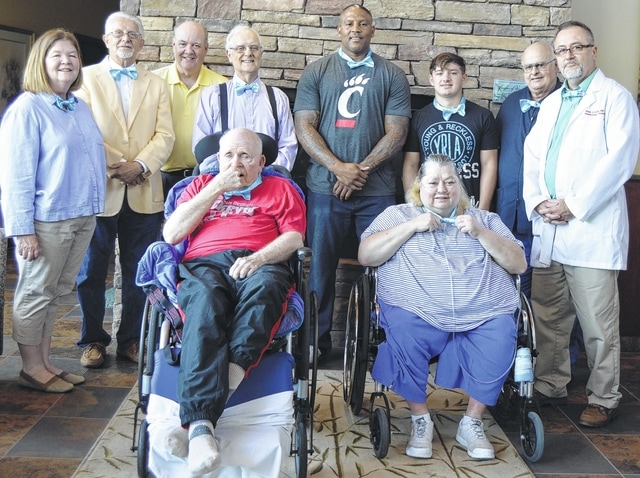

WILMINGTON — At the Foster J. Boyd, M.D., Regional Cancer Center – A Member of The James Cancer Network, prostate cancer is the fourth most common cancer they see.
September Is National Prostate Cancer Awareness Month. Nationwide, prostate cancer is the second most common cancer among men, said Dr. Mark Collins, director of medical oncology at the Foster Boyd Cancer Center.
In conjunction with awareness month, Collins provided the following information.
• About 80 percent of men are diagnosed with prostate cancer after they’re found to have an elevated PSA lab test. About 20 percent are diagnosed after an abnormal digital rectal exam.
• Among types of cancer, prostate cancer is an area of great controversy in terms of management, including prostate cancer screening. In 2008, the United States Preventive Services Task Force (USPSTF) recommended against screening in men over age 75. More recently in 2012, USPSTF recommended against screening for all men.
Many physicians do not abide by the USPSTF recommendations. The initial intent was concern over patients being over-treated for a disease that is often non-threatening if caught early. But many feel that high-risk patients should still be screened.
High-risk patients include: a) patients who have a positive family history of prostate cancer; and b) African-American males if the screening applicant has a life expectancy of more than 10 years.
• Most patients with prostate cancer who are diagnosed after an elevated PSA test have early stage disease, and usually they are free of symptoms.
If a biopsy is needed, it is usually done by a urologist trans-rectally, and is frequently done with ultra-sound guidance.
• Once a patient is diagnosed with prostate cancer, Foster Boyd Cancer Center staff attempt to risk-stratify to determine who needs treatment as opposed to observation.
Risk-stratifying means to determine whether the patient has a low, intermediate, or a high risk of dying of prostate cancer.
Factors that determine risk include: a) extent of the disease seen on X-rays, plus the PSA value, and the Gleason score.
• Depending on the risk assigned by your doctor, the treatment options include: a) observation; b) surgery which is radical prostatectomy; c) radiation therapy; and d) occasionally, testosterone suppression known as ADT (Androgene Deprivation Therapy). Chemotherapy is also an option.
• There are about 180,000 new diagnoses of prostate cancer per year in the United States.
• Most patients with early stage prostate cancer are asymptomatic — that is, they lack symptoms.
Many more men have symptoms that are related to an enlarged prostate, as opposed to having prostate cancer. However, only your doctor can tell the difference.
Note: The medical information above is provided as an information resource only, in connection with National Prostate Cancer Awareness Month.



